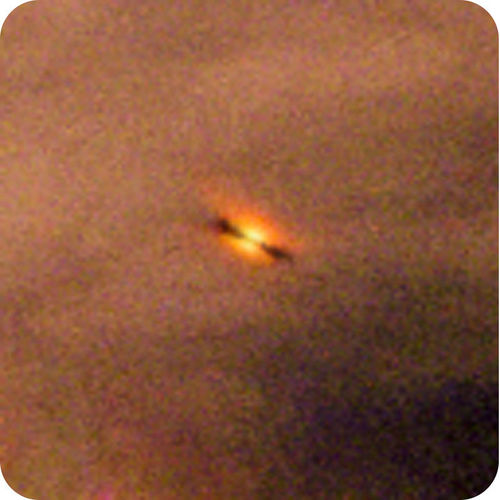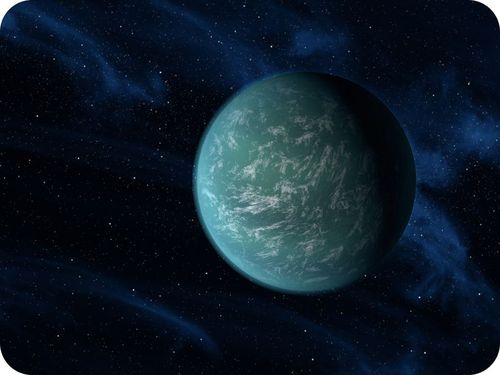Are you surprised by exoplanets?
Scientists have always thought there had to be planets outside our solar system. They just couldn’t see them. Now that there are ways to find exoplanets, it turns out that there are many of them. In this artists concept, the star Gliese 436 is a dwarf star and is reddish because it is cool. The planet has recently been discovered. It is the size of Neptune and orbits its star every 2.6 days.
Extrasolar Planets
Since the early 1990s, astronomers have discovered other solar systems. A solar system has one or more planets orbiting one or more stars. We call these planets “extrasolar planets,” or exoplanets . They are called exoplanets because they orbit a star other than the sun. As of October 2012, more than 3,000 exoplanets have been found, with 836 confirmed. The rate of discovery is increasing rapidly! You can check out how many we have found at http://planetquest.jpl.nasa.gov/ .
This protoplanetary disk in the Orion nebula will condense to form planets.
Exoplanets are very far away, and they are relatively tiny. So we have been able to take pictures of only a few exoplanets. Most are discovered because of some tell-tale signs. One sign is a very slight motion of a star that must be caused by the pull of a planet.
An animation showing how this looks is seen here from above:http://upload.wikimedia.org/wikipedia/commons/5/59/Orbit3.gif . This is in line with the plane of the system: http://en.wikipedia.org/wiki/File:Dopspec-inline.gif .
Another sign is the partial dimming of a star’s light as the planet passes in front of it.
Life
If life exists elsewhere in the Universe, it is almost certainly on an exoplanet. Which exoplanets could have life? Probably those that are most like Earth. Kepler-22b is the Earth-zone of a sun-like star. This means that the planet is the right distancefrom its star for life. The planet could have liquid water, which is necessary for life on Earth. Scientists do not know if there is life on Kepler-22b and won’t for a long time. It’s fun to think about though! An artist’s depiction of Kepler-22b is pictured below ( Figure below ).
Keppler-22b. Could there be life here?
Extrasolar Planet from the ESA discusses extrasolar planets and particularly a planetary system very similar to our solar system: http://www.youtube.com/watch?v=ouJahDONTWc (3:29).
An introduction to extrasolar planets from NASA is available at:http://www.youtube.com/watch?v=oeeZCHDNTvQ (3:14).
According to NASA, a statistical analysis shows that the Milky Way galaxy contains 100 million planets. That’s a lot of exoplanets!
http://science.kqed.org/quest/audio/exoplanets/
Vocabulary
- exoplanet : Short for extrasolar planet; a planet that exists in a solar system different from our own.
Summary
- Now that scientists know how to identify extrasolar planets, the numbers of confirmed examples are increasing rapidly.
- If there is life elsewhere in the universe, it is most likely on an Earth-like exoplanet.
- The gravitational pull of a planet may be detected in the slight motion of a star.
Practice
Use the resource below to answer the questions that follow.
- The Planet Hunters at http://science.kqed.org/quest/video/the-planet-hunters/(10:37)



